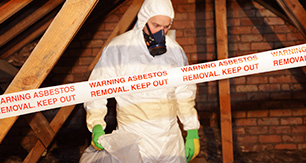When installing fire-rated gypsum Type X and Type C panels, it is essential to know the difference between the two. Misuse of these panels may lead to safety issues, building code violations and delays in project completion.
Fire-rated gypsum panels play a crucial role in reducing damages and slowing the spread of fire in commercial and residential buildings. They resist fire longer than regular gypsum boards because of the special fibres and other additives used to reinforce their core. However, Type C and Type X panels react differently than one another to thermal exposure.

What are the differences?
- Type X panels are available only in 15.9 millimetre size
- Type C panels are available in both 15.9 millimetres and 12.7 millimetres
- Type C panels contain a unique core formulation that provides higher performance than Type X panels when exposed to flame or heat
- Type C panels can replace Type X panels, but Type X panels CANNOT replace Type C panels
What if a job asks for 12.7 mm Type X panels?
This question can be confusing because there are no 12.7-millimetre Type X products available. In these situations, use Type C 12.7-millimetre panels as they exceed fire resistance requirements and provide better acoustic performance.
What type of panel should I use?
When a Type X panel is used instead of a Type C panel, safety concerns arise. Pamela Shinkoda, manager of Technical Solutions and Quality at CGC, said, “In designs (that) need higher fire resistance or acoustic performance (such as ceilings and shaft walls), the design may specify a Type C product because it needs that extra performance from the gypsum panel. In those cases, it must be a Type C formulation.”
If any questions still arise as to what type of fire-rated gypsum panel to use, it is critical to look at the fire designs for your project.








